ON PAIN & SHIFTING INTO HEAL MODE:
Several years ago I was driving back to Massachusetts from Wisconsin and having a reoccurrence of terrible sciatica. I had kept up my Foundation Training practice during the trip and done some muscle and facial work on myself, but the pain persisted. I had eaten some things that I normally stay away from because they cause inflammation and auto-immune issues in me so I thought maybe the pain was coming from inflamed guts, since there are branches of the sciatic nerve that move through there. I was also getting scared that perhaps there was some real damage and that I was facing the beginning of the end for my back. The more afraid I got, the more pain came. I started to listen to this great podcast on pain called “Tell Me About Your Pain,” and the biggest lesson I got from the podcast was that when we look at pain from a lens of fear, the body will amplify the pain. If we look at the pain from a lens of curiosity, often the pain signals will go down and we will gain insight into what is going on.
LENS OF FEAR:
If we feel the pain and start having scary thoughts about it, maybe even start to imagine a dreadful future and see images of ourselves with things that we are afraid of happening, like having to go into the medical system and get help from people that cause more damage than good, having to give up something we love, losing the ability to walk, being unable to work, becoming homeless, spending all our money, losing all our friends… then the body / nervous system, pain pathway will begin to amplify the feeling of pain even though nothing worse is happening & there is no more damage happening. This is tricky because the more painful it gets, often the more scared we get! With the increase of pain it seems to signal to us that something worse is definitely happening and we can get even more afraid.
LENS OF CURIOSITY:
To look at our pain from a lens of curiosity means that we bring our awareness there and really try to sense it. On a scale of 1-10, how strong is the pain? Is it moving? What shape is it? Does it have a center? Where is the center? Is there a web of interconnected parts? Is it sharp? Dull? Radiating? Streaking? Imagine you had to make a painting of the pain to show it to someone, all of its parts, colors, the shape it’s making, the way it lives in the body, a movement it has, density of it… Is it fluid? Is it woody? Earthy? Fiery? What is the viscosity of the tissue around it? Get that clear about it.
When I was in the car on that trip & listening to that podcast, I started to try to bring that lens of curiosity to my pain and the more I looked for the pain, the less I could feel it! It seemed to disappear! It was like it didn’t even actually exist! As the sensation went down and even disappeared, I relaxed and the “sciatica” basically went away. Every time it would reappear, I’d look for it, and as I tried to find it, it would disappear.
Here are some very cool things about pain that support me when I am in pain below! I am also linking to a podcast that I recently made out of a class recording which was the opening class of the last Foundation Training Series.
MINDSET AND MODES OF NERVOUS SYSTEM:
PROTECT OR HEAL:
Our mindset around pain is important because:
- When we are in a sympathetic state of our nervous system (fight, flight, freeze – stress zone) the body will protect or create a holding pattern around pain, injury or a force that has entered into the body.
- When we shift into the parasympathetic state (rest, digest & heal – relax zone), the nervous system and body will move from holding and protecting around the pain, injury, or force that has entered the system into heal mode.
We do have the power to shift our state and in the podcast below I share several methods for how to do that.
PODCAST: SELF REGULATING THE NERVOUS SYSTEM
SENSITIZATION:
“We know most tissues in the human body heal between 3-6 months. It is now well established that ongoing pain is more due to a sensitive nervous system. In other words, the body’s alarm system stays in alarm mode even after the tissues have healed.”
SENSITIZATION & CHRONIC PAIN:
“This is important because chronic pain is nearly always a mistake-a fault in the alarm systems. Your brain decides for you according to it’s internal priorities. Reality is filtered through culture, history, evolution, prior learning – in fact, anything that is relevant to you.”
Unless of course, we are structurally / energetically / emotionally compromised in a way that is throwing off the biodynamic interconnected relationships between the whole web of our body or we are continuing to move in a way that causes wear and tear to our body. This is why it is so helpful to get bodywork to address some of the deeper patterns / roots that we are caught in and to learn a practice like Foundation Training to build a new road forward through practicing movement patterns that build us up and take compression spots out of the body’s system.
A SUBJECTIVE EXPERIENCE:
“Pain is a subjective experience that protects the body. Pain is, at its very fundamental level, all about your brain’s assessment of safety: unsafe things hurt. If your brain thinks you’re safe, pain goes down. Pain depends on how much danger your brain thinks you are in, not how much you are really in.”
A NEUROTAG:
“A neurotag is a pattern or a map in the nervous system. A pain neurotag links many systems into a conscious pain event. Pull any one element of a neurotag and the whole pain event can be triggered.”
Some things that can pull on an element of a neurotag:
- Stress / being in a stressful situation
- Breathing into or moving an area of the body where a pain event occurred in the past
- Having a memory come up
- Visiting a place from our past or one that reminds us of our past
- A challenging social interaction


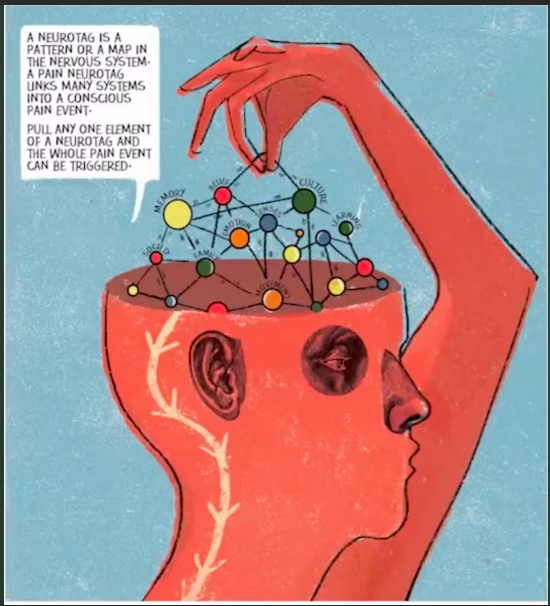
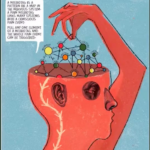
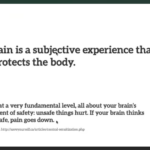

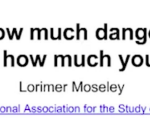
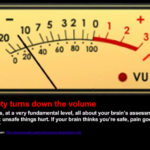
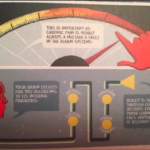
0 Comments